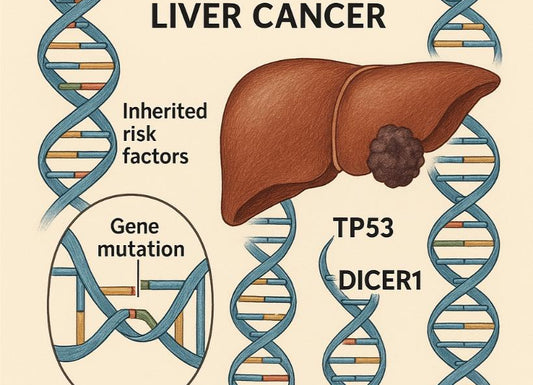Does Exercise Help Liver Cirrhosis?
 Written By
Yusela Aquino
Written By
Yusela Aquino

Your liver works tirelessly to keep you healthy, but when cirrhosis sets in, its function takes a serious hit. This progressive scarring can lead to severe complications, including fluid retention, infections, and even liver failure. If you or a loved one has been diagnosed with cirrhosis, you may wonder whether exercise can make a difference. While physical activity cannot reverse cirrhosis, research suggests it plays a key role in managing symptoms, preserving muscle mass, and supporting overall well-being. Scar tissue in the liver cannot be reversed by exercise, but physical exercise can help manage symptoms and slow the progression of liver disease.
Lifestyle modifications—including diet and regular physical activity—are essential for slowing disease progression and improving quality of life. But is exercise safe for individuals with liver disease? And what types of movement are most beneficial? Let’s explore the science behind exercise and liver health, the benefits for cirrhosis patients, and safe ways to incorporate movement into your routine.
The Science: How Exercise Supports Liver Function
It’s a common misconception that individuals with liver disease should avoid physical exertion. In reality, exercise is not only safe but beneficial. The liver is deeply involved in metabolism, and regular movement helps regulate body weight, improve insulin sensitivity, and reduce inflammation—key factors in liver health. Physical exercise has been studied in clinical trials for cirrhotic patients, focusing on its safety and efficacy in improving outcomes.
One of the primary concerns for cirrhosis patients is sarcopenia, a condition characterized by muscle loss due to chronic liver disease. Exercise, particularly resistance and strength training, helps counteract muscle wasting, maintaining strength and mobility. Exercise interventions can increase lean body mass and lean mass, which are measured in studies using techniques like dual-energy X-ray absorptiometry and bioimpedance. Additionally, for those with cirrhosis linked to non-alcoholic fatty liver disease (NAFLD), physical activity can help reduce fat accumulation in the liver, potentially preventing further damage. Skeletal muscle is also important for ammonia detoxification, which can help reduce the risk and severity of hepatic encephalopathy in cirrhotic patients.
Can Exercise Promote Liver Health?

While cirrhosis causes permanent scarring, some liver cells retain the ability to regenerate under favorable conditions. Exercise may indirectly support overall liver function by enhancing blood circulation and reducing oxidative stress. Improved circulation ensures oxygen and nutrients reach liver cells, which can support better metabolic function. Aerobic exercise and endurance training can improve aerobic capacity, exercise capacity, and functional capacity in patients with cirrhosis.
Oxidative stress—an imbalance between free radicals and antioxidants—contributes to liver damage. Regular physical activity has been shown to enhance the body’s antioxidant defenses, reducing oxidative stress and inflammation. Some research suggests that exercise may promote autophagy, the body’s natural process of clearing out damaged cells. While this does not reverse cirrhosis, it may help slow disease progression and support overall health.
Benefits of Exercise for Cirrhosis Patients
-
Improved Circulation: Poor blood flow can exacerbate symptoms like fatigue and swelling. Regular movement enhances circulation, supporting heart and liver health.
-
Reduced Fatigue: Exercise boosts energy levels by improving mitochondrial function—the energy-producing centers of cells.
-
Muscle Preservation: Resistance training helps counteract muscle loss, a common concern for cirrhosis patients.
-
Better Insulin Sensitivity: Many individuals with cirrhosis develop insulin resistance. Exercise helps regulate blood sugar levels, reducing metabolic stress on the liver.
-
Enhanced Mental Well-being: Physical activity is linked to reduced anxiety and depression, common in individuals managing chronic conditions.
Exercise training can improve muscle strength, respiratory muscle strength, and exercise performance, which are important for cirrhotic patients. Moderate exercise and high intensity interval training have both been shown to improve oxygen consumption, peak oxygen uptake, and ventilatory efficiency. Being physically active and participating in a physical exercise program can improve health related quality and reduce the risk of prolonged hospitalization.
Safe Exercise Strategies for Individuals with Liver Cirrhosis
Before starting an exercise regimen, it’s essential to consult a healthcare provider to determine a safe and effective plan. An individualized exercise prescription is important, and exercise programs should be tailored to the needs of patients with cirrhosis, including liver transplant candidates. Once cleared, consider beginning with low-impact activities:
-
Walking: A simple yet effective way to improve circulation and endurance.
-
Cycling: Provides cardiovascular benefits while being gentle on joints.
-
Swimming (With Caution): Offers full-body movement but may be challenging for those with advanced cirrhosis or severe fatigue.
-
Stretching and Mobility Work: Helps maintain flexibility and prevent stiffness.
-
Light Resistance Training: Using resistance bands or light weights can support muscle maintenance.
Types of exercise performed in studies include aerobic exercise, resistance training, and endurance training, with the exercise group compared to a control group or non exercise group. The typical duration of exercise interventions is around eight weeks, with outcomes measured such as increased muscle mass, improved body composition, and changes in substrate utilization.
Listening to your body is key. If you experience dizziness, shortness of breath, or pain, take a break and adjust your routine accordingly. Overexertion can be harmful, so gradual progression is recommended.
When to Exercise with Caution
While exercise is generally beneficial, certain conditions require extra precautions. Individuals with advanced cirrhosis, severe ascites (fluid buildup), or esophageal varices (swollen veins prone to bleeding) may need to modify their routine or avoid high-intensity activities. Strenuous exercises, such as heavy weightlifting or movements that increase abdominal pressure, should be approached with caution. Advanced liver disease, portal hypertension, and high blood pressure increase the risk of adverse events such as spontaneous bacterial peritonitis. Monitoring portal pressure and hepatic venous pressure gradient during exercise is important in patients with cirrhosis.
Clinical trials often use exclusion criteria such as severe hepatic encephalopathy or chronic active hepatitis to ensure patient safety. Exercise can help reduce blood ammonia and improve substrate metabolism, which is beneficial for managing hepatic encephalopathy and overall metabolic health.
If you notice symptoms like severe fatigue, dizziness, or increased swelling after physical activity, consult your doctor to adjust your regimen. Staying within a safe range of activity ensures you gain the benefits without exacerbating your condition.
Final Thoughts
Exercise is a valuable tool for supporting overall health in individuals with cirrhosis—but balance is key. Regular movement can help preserve muscle mass, enhance circulation, and support metabolic function. Exercise physiology plays a crucial role in developing safe and effective exercise programs for patients with cirrhosis and those awaiting liver transplantation or liver transplant. Impaired exercise capacity, decreased exercise capacity, and reduced exercise capacity are predictors of poor outcomes, so improving exercise tolerance is a key goal. Studies measure outcomes like functional capacity, exercise capacity, and health related quality, comparing the exercise group to the control group. It is also important to monitor for adverse events during exercise interventions. However, it’s crucial to approach exercise mindfully, tailoring activities to your body’s needs and working with your healthcare provider for guidance.
If you’re managing cirrhosis and want to keep track of your liver health, consider using an at-home liver test kit like Ribbon Checkup. These tests provide valuable insights into liver function, allowing you to monitor changes over time. Remember, every step toward better health counts—so move with intention, listen to your body, and take control of your well-being.
Related Resources
- How to check liver function at home
- Liver Pain Location: Understanding Its Causes and Symptoms
- What Does Urobilinogen in Urine Mean?
References
Allameh, A., Niayesh-Mehr, R., Aliarab, A., Sebastiani, G., & Pantopoulos, K. (2023). Oxidative stress in liver Pathophysiology and Disease. Antioxidants, 12(9), 1653. https://doi.org/10.3390/antiox12091653
Chronic Liver Disease/Cirrhosis. (2025, February 6). Johns Hopkins Medicine. https://www.hopkinsmedicine.org/health/conditions-and-diseases/chronic-liver-disease-cirrhosis
Circulatory response to exercise in health. (1987, December 1). PubMed. https://pubmed.ncbi.nlm.nih.gov/3315298/
Dhaliwal, A., & Armstrong, M. J. (2020). Sarcopenia in cirrhosis: A practical overview. Clinical Medicine, 20(5), 489–492. https://doi.org/10.7861/clinmed.2020-0089
Halling, J. F., & Pilegaard, H. (2017). Autophagy-Dependent beneficial effects of exercise. Cold Spring Harbor Perspectives in Medicine, 7(8), a029777. https://doi.org/10.1101/cshperspect.a029777
Huertas, J. R., Casuso, R. A., Agustín, P. H., & Cogliati, S. (2019). Stay Fit, Stay Young: Mitochondria in Movement: The role of Exercise in the new Mitochondrial Paradigm. Oxidative Medicine and Cellular Longevity, 2019, 1–18. https://doi.org/10.1155/2019/7058350
Penn State College of Medicine News. (2021, June 7). How patients with liver disease can benefit from exercise - Penn State Health News. Penn State Health News. https://pennstatehealthnews.org/topics/how-patients-with-liver-disease-can-benefit-from-exercise
Physical activity and exercise - British Liver Trust. (2024, March 19). British Liver Trust. https://britishlivertrust.org.uk/information-and-support/living-with-a-liver-condition/diet-and-liver-disease/physical-activity-exercise/
Puri, P., & Kotwal, N. (2021). An approach to the Management of diabetes mellitus in Cirrhosis: a primer for the hepatologist. Journal of Clinical and Experimental Hepatology, 12(2), 560–574. https://doi.org/10.1016/j.jceh.2021.09.010
Wanjau, M. N., Möller, H., Haigh, F., Milat, A., Hayek, R., Lucas, P., & Veerman, J. L. (2023). Physical Activity and Depression and Anxiety Disorders: A Systematic Review of Reviews and Assessment of Causality. AJPM Focus, 2(2), 100074. https://doi.org/10.1016/j.focus.2023.100074

Yusela is a medical student with a degree in Biology and a strong foundation in health communication. With experience in both research and clinical settings, she writes clear, evidence-informed content to help patients and caregivers better understand liver health, chronic disease, and transplant care.



